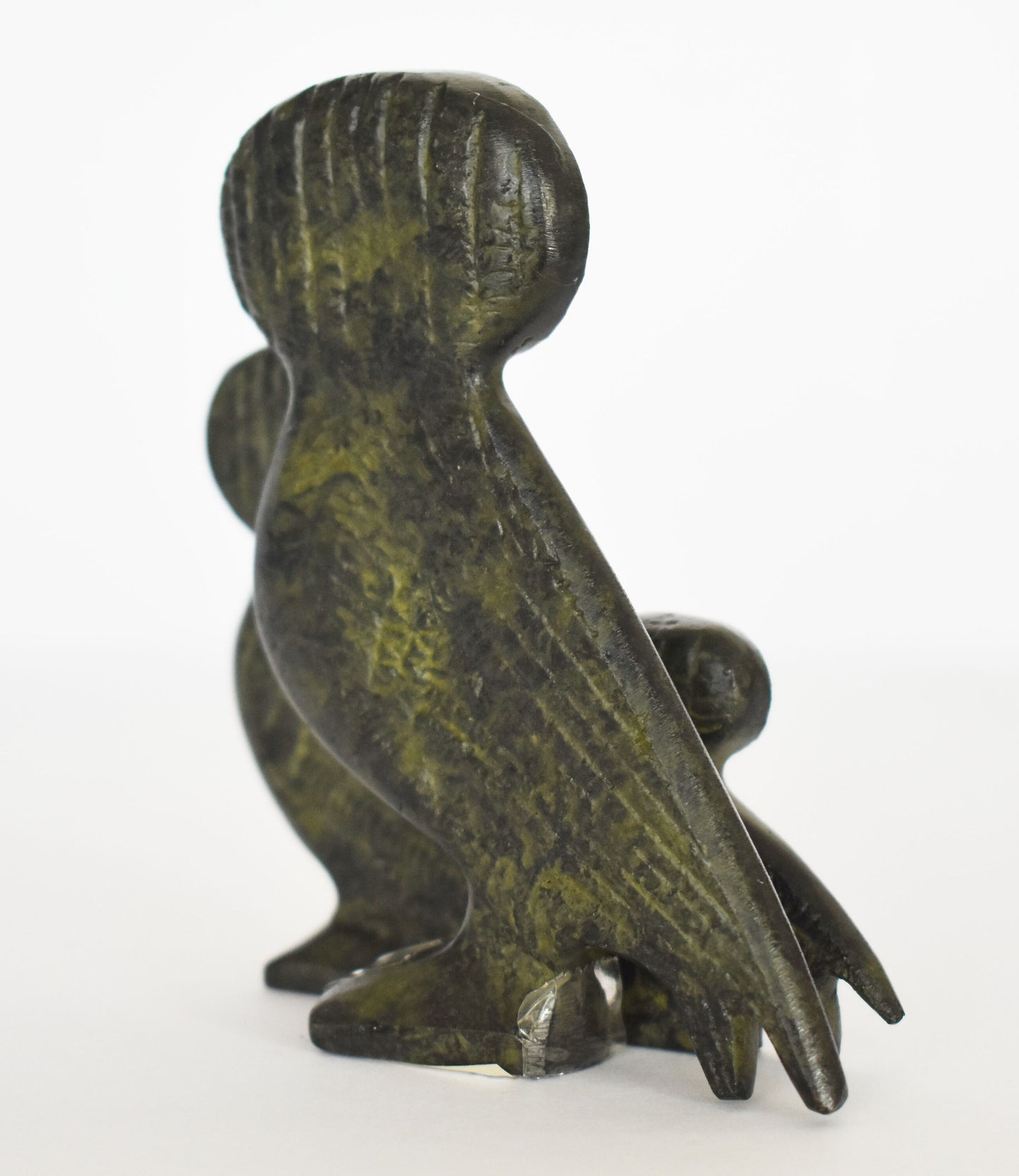Gallery Demeter
Set of three Owls - Wisdom and Intelligence - Symbol of Goddess Athena Minerva - Ancient Greece - pure bronze statue
Set of three Owls - Wisdom and Intelligence - Symbol of Goddess Athena Minerva - Ancient Greece - pure bronze statue
Couldn't load pickup availability
Condition: New, Made in Greece.
Material: Pure Bronze
Height: 9,5 cm - 3,7 inches
Width: 8 cm - 3,1 inches
Length: 3 cm - 1,2 inches
Weight: 450 g
In Greek mythology, a little owl (Athene noctua) traditionally represents or accompanies Athena, the virgin goddess of wisdom, or Minerva, her syncretic incarnation in Roman mythology. Because of such association, the bird – often referred to as the "owl of Athena" or the "owl of Minerva" – has been used as a symbol of knowledge, wisdom, perspicacity and erudition throughout the Western world.
The reasons for the association of Athena and the owl are uncertain. Some mythographers, such as David Kinsley and Martin P. Nilsson, suggest that she may descend from a Minoan palace goddess associated with birds and Marija Gimbutas claim to trace Athena's origins as an Old European bird and snake goddess.
On the other hand, Cynthia Berger theorizes about the appeal of some characteristics of owls – such as their ability to see in the dark – to be used as symbol of wisdom while others, such as William Geoffrey Arnott, propose a simple association between founding myths of Athens and the significant number of little owls in the region (a fact noted since antiquity by Aristophanes in The Birds and Lysistrata).
In any case, the city of Athens seems to have adopted the owl as proof of allegiance to its patron virgin goddess, who, according to a popular etiological myth reproduced on the West pediment of the Parthenon, secured the favor of its citizens by providing them with a more enticing gift than Poseidon.
Owls were commonly reproduced by Athenians in vases, weights and prize amphoras for the Panathenaic Games. The owl of Athena even became the common obverse of the Athenian tetradrachms after 510 BC and according to Philochorus, the Athenian tetradrachm was known as glaux (γλαύξ, little owl) throughout the ancient world and "owl" in present-day numismatics.They were not, however, used exclusively by them to represent Athena and were even used for motivation during battles by other Greek cities, such as in the victory of Agathocles of Syracuse over the Carthaginians in 310 BC – in which owls flying through the ranks were interpreted as Athena's blessing[3] – or in the Battle of Salamis, chronicled in Plutarch's biography of Themistocles.
ΘEO 98Α ΤΡΕΙΣ ΚΟΥΚΟΥΒΑΓΙΕΣ - 24,19









